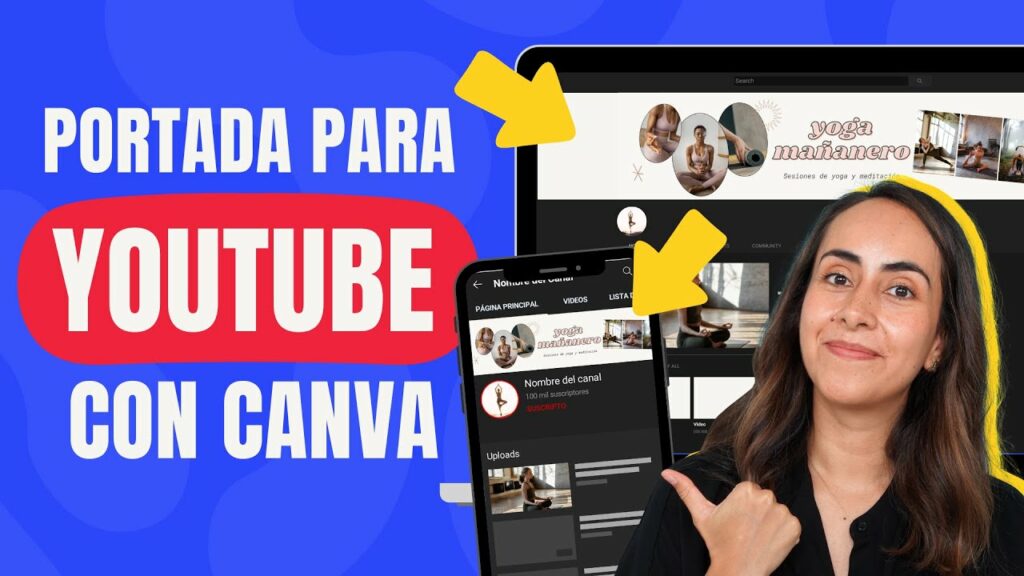
Step 1: Define Your Channel’s Purpose
🚀 Step 1: Define Your Channel’s Purpose 🚀
One of the key factors when starting a new channel or revamping an existing one is to define its purpose. What is the main goal of your channel? Are you aiming to provide informative content, entertain your audience, or promote a specific product or service? Clearly defining your channel’s purpose will help you create focused and targeted content that resonates with your audience.
💡 Why is defining your channel’s purpose important? 💡
By having a clear purpose, you can set specific objectives and create a content strategy that aligns with your goals. For instance, if you aim to provide informative content, you can focus on creating tutorials, tips, and guides that educate your viewers. On the other hand, if your purpose is to entertain, you can produce engaging and humorous content that keeps your audience entertained.
✅ Tips for defining your channel’s purpose ✅
1️⃣ Identify your target audience. Who are you creating content for? Understanding your audience will help you tailor your content to their preferences and interests.
2️⃣ Research your competition. Analyze other channels in your niche to see what is working for them and what gaps you can fill with your content.
3️⃣ Consider your own passions and expertise. What topics are you knowledgeable about and passionate to talk about? Creating content that you enjoy will keep you motivated and engaged with your audience.
4️⃣ Clearly communicate your channel’s purpose to your viewers. Make sure your audience understands what they can expect from your channel and how it will benefit them.
🌟 Define Your Channel’s Purpose and Take Off! 🌟
By taking the time to define your channel’s purpose, you are setting a strong foundation for success. It will guide your content creation process, help you connect with your audience, and ultimately grow your channel. So, go ahead and define your channel’s purpose and let your creativity soar!
Step 2: Choose the Right Image
📷
When it comes to creating engaging online content, choosing the right image is crucial. An image can communicate more than words alone and has the power to capture your audience’s attention. However, not all images are created equal. In this step, we will delve into the importance of selecting the right image for your blog post or website.
One of the key factors to consider when choosing an image is relevance. The image should be aligned with the topic of your content and add value to it. A visually appealing image that complements your text can enhance the overall user experience and make your content more shareable.
In addition to relevance, it’s important to choose high-quality images. Blurry or pixelated images can detract from the professionalism of your blog or website. Investing in high-resolution images or utilizing professional stock photo platforms can greatly improve the visual appeal of your content.
Another consideration when selecting an image is its composition. A well-composed image can effectively convey your intended message. Pay attention to factors such as the subject’s placement, lighting, and overall balance within the frame. An image that is visually appealing and well-composed will have a greater impact on your audience.
Furthermore, consider the emotional impact of the image. Different images can evoke various emotions and set the tone for your content. Depending on your desired message, you may opt for an image that conveys happiness, inspiration, or even empathy. Choose an image that aligns with the emotional response you want to evoke in your readers.
When it comes to image selection, don’t forget about copyright laws. It’s essential to use images that are either in the public domain or properly licensed for use. This will help you avoid legal issues and potential damage to your online reputation. Many websites offer free or paid stock images that can be used legally.
In conclusion, choosing the right image is a critical step in creating engaging online content. Consider the relevance, quality, composition, emotional impact, and copyright of the image you select. By paying attention to these factors, you can enhance the overall effectiveness of your blog posts or website and create a visually appealing experience for your audience.
Step 3: Add Compelling Text
🖋 Una vez que hayas captado la atención de tus visitantes con un diseño atractivo y una navegación fluida, es crucial complementar tu sitio web con un texto que enganche y mantenga a los usuarios interesados. ¿Cómo lograr esto? ¡Con un contenido convincente que los atrape desde el primer párrafo!
✍️ En esta tercera entrega de nuestra serie sobre cómo crear un sitio web exitoso, nos enfocaremos específicamente en la importancia de agregar un texto cautivador. Es la clave para transmitir tu mensaje de manera efectiva y persuadir a tus visitantes a tomar acción.
💡 Para comenzar, debes tener una idea clara de quiénes son tu audiencia y cuál es el objetivo de tu sitio web. Esto te permitirá adaptar tu contenido para conectar de manera emocional con tus lectores y brindarles la información que están buscando. Un análisis previo de las palabras clave relevantes y un estudio de la competencia pueden ayudarte a orientar tu enfoque.
📝 A la hora de redactar, recuerda utilizar un lenguaje claro, conciso y atractivo. Evita tecnicismos complicados y opta por un estilo amigable que genere confianza y cercanía. Utiliza párrafos cortos, títulos y subtítulos para organizar la información de manera clara y facilitar la lectura.
🤩 No subestimes el poder de las imágenes y los recursos visuales. Acompaña tu texto con gráficos, fotografías, videos o infografías atractivas y relevantes. Estos elementos visuales no solo ayudarán a captar la atención y mantener el interés de tus visitantes, sino que también pueden ser una herramienta invaluable para transmitir información de manera rápida y efectiva.
💬 No olvides igualmente la importancia de la estructura y el formato de tu texto. Utiliza listas y viñetas para resumir la información clave y hacerla más fácilmente digerible. Recuerda también destacar las frases más importantes en cursiva, lo que ayudará a que el lector identifique rápidamente los puntos clave de tu mensaje.
En resumen, agregar un texto cautivador no solo es esencial para captar la atención de tus visitantes, sino también para transmitir tu mensaje de manera efectiva y persuadirlos a seguir navegando en tu sitio web. Con un contenido bien estructurado, amigable y adaptado a tu audiencia, estarás un paso más cerca de lograr el éxito en línea. ¡No te pierdas nuestro próximo artículo donde hablaremos de cómo optimizar tu sitio web para los motores de búsqueda!
- 📱👨⚕️ Descubre cómo optimizar tu experiencia de atención médica con el Banner Patient Portal
- 🎨 ¡Descubre el impresionante mundo del 🌸 Banner Fu Xuan! ¡Inspírate con diseños increíbles y colores vibrantes! 🖼️💫
- 🎉 ¡Revive la nostalgia con el mejor 🔥 banner de los 80! Descubre los diseños más icónicos y tendencias de la época
- 🎉🌍 ¡Descubre los mejores ✈️ banners para tus viajes! Atrae miradas y planifica tus aventuras con estilo 🌟
- 🎯 ¡Descubre el poder del sensor manual Banner Q4X en español! 🌐
Step 4: Use Colors and Fonts Wisely
🎨 Step 4: Use Colors and Fonts Wisely 🖋️
When it comes to designing a website, one of the most important elements to consider is the use of colors and fonts. The right combination of colors and fonts can significantly enhance the overall aesthetic appeal and user experience of your website. In this step, we will explore some best practices for choosing colors and fonts that will elevate your website to the next level.
First and foremost, it is crucial to select colors that align with your brand identity. The colors you choose should reflect the values and personality of your brand. For example, if your brand is playful and energetic, you might consider using bright and vibrant colors. Conversely, if your brand is more professional and sophisticated, opting for neutral and muted tones would be more appropriate.
In addition to selecting suitable colors, it is essential to pay attention to the contrast between background and text colors. High contrast ensures that the text is easily readable, promoting a seamless reading experience for your visitors. Take the time to test the color combinations to ensure optimal legibility and accessibility.
When it comes to fonts, simplicity is key. Stick to clean and easy-to-read fonts that are widely supported across different devices and browsers. Complex and decorative fonts may look visually appealing, but they can also be difficult to read, especially for users with visual impairments. Remember, readability should always be a top priority.
Furthermore, consider the hierarchy of fonts to create a visual structure. Use different font sizes, weights, and styles to distinguish headings, subheadings, and body text. This will not only improve the readability but also enhance the overall visual appeal of your website.
Lastly, do not underestimate the power of consistency. Use a limited number of colors and fonts throughout your website to maintain a cohesive look and feel. Consistency not only enhances the professionalism of your website but also helps establish your brand identity in the minds of your visitors.
In conclusion, choosing the right colors and fonts is essential for creating a visually appealing and user-friendly website. By selecting colors that align with your brand identity, ensuring adequate contrast, and using readable fonts, you can create a design that captivates your audience. Additionally, adopting a consistent approach will help establish a strong brand presence. So, take your time in this step and make sure to use colors and fonts wisely to create a visually stunning website.
Step 5: Optimize for Different Devices
📱 In today’s digital age, it is crucial for websites to be responsive and optimized for different devices. With the increasing use of smartphones and tablets, users are accessing websites from various screen sizes and resolutions.
✅ To ensure a seamless user experience, it is essential to optimize your website for different devices. This involves making your website responsive, which means it adjusts and adapts to different screen sizes automatically.
📊 One way to optimize your website for different devices is by using a responsive design framework, such as Bootstrap or Foundation. These frameworks provide a set of pre-built responsive components and styles that you can use to create a mobile-friendly website.
🖥 Another important aspect of optimizing for different devices is optimizing your website’s loading time. Users expect fast-loading websites, regardless of the device they are using. You can achieve this by optimizing images, minimizing the use of external scripts, and leveraging browser caching.
🔍 Additionally, it is crucial to ensure that your website’s content is easily readable on smaller screens. This means using legible font sizes, having enough spacing between elements, and avoiding content that requires zooming in or scrolling horizontally.
🌐 Lastly, don’t forget to test your website on different devices and screen sizes to ensure that it looks and functions as intended. This will help you identify any potential issues and make necessary adjustments to provide a seamless user experience.
Step 6: Keep It Simple and Uncluttered
💡 Step 6: Keep It Simple and Uncluttered 💡
En la vorágine de la era digital, a menudo nos encontramos con una sobrecarga de información y un exceso de elementos visuales. Esto puede resultar abrumador tanto para los creadores de contenido como para los usuarios. Por eso, en el sexto paso de esta serie de consejos SEO, nos enfocaremos en la importancia de mantener las cosas simples y sin desorden.
Cuando se trata de diseño web, menos es más. Un diseño simplificado y minimalista no solo ayuda a que el contenido destaque, sino que también mejora la experiencia del usuario. Al eliminar los elementos innecesarios, los visitantes de tu página web podrán navegar de manera más fluida y encontrar rápidamente lo que están buscando.
Para lograr un diseño simple y sin desorden, es fundamental priorizar la función sobre la forma. Cada elemento y cada componente visual deben tener una razón de ser y un propósito claro. Elimina cualquier elemento superfluo que pueda distraer o confundir al usuario. Recuerda que la simplicidad no implica falta de creatividad, sino encontrar el equilibrio perfecto entre la estética y la usabilidad.
Una buena práctica es utilizar un esquema de colores y tipografías coherente en todo tu sitio web. Esto ayuda a crear una sensación de unidad y cohesión visual. Además, facilita la lectura y la comprensión del contenido. Evita utilizar múltiples tipos de fuentes o colores llamativos que puedan distraer la atención del usuario.
En resumen, mantener tu sitio web simple y sin desorden es esencial para ofrecer una experiencia de usuario óptima. Al eliminar elementos innecesarios y centrarte en la funcionalidad, lograrás que tus visitantes se sientan cómodos y puedan acceder rápidamente a la información que buscan. Recuerda que menos es más, y que la simplicidad puede ser tu mejor aliada en el mundo digital. ✨
Step 7: Regularly Update and Refresh
🔄
En el mundo digital, la clave para mantener el éxito y la relevancia es la constante actualización y renovación. En este sentido, el paso número 7 es fundamental: actualizar y refrescar regularmente tus contenidos.
Actualmente, los motores de búsqueda valoran aquellos sitios web que ofrecen contenido fresco y relevante. Al actualizar tu contenido de forma regular, le estás diciendo a los motores de búsqueda que tu sitio sigue siendo útil y valioso para los usuarios.
Además, la actualización continua de tu contenido también te permite mantener a tus seguidores interesados y comprometidos. Siempre es emocionante para ellos ver contenido nuevo y actualizado, lo que puede aumentar la interacción y el tiempo de permanencia en tu sitio.
Es importante tener en cuenta que la actualización no solo se refiere a la creación de contenido completamente nuevo, sino también a la revisión y mejora de los artículos y publicaciones antiguas. Corrige información desactualizada, añade nuevos datos o puntos de vista y asegúrate de que todo esté al día.
No olvides que parte de esta actualización incluye la optimización SEO. Asegúrate de utilizar las palabras clave adecuadas, optimizar las meta descripciones y los títulos, y realizar cualquier ajuste necesario para mejorar tu posicionamiento en los motores de búsqueda.
En resumen, el paso 7 es crucial para el éxito continuo de tu sitio web. Actualiza y refresca regularmente tus contenidos para mantener el interés de tus seguidores, demostrar su relevancia a los motores de búsqueda y mejorar tu posicionamiento online. ¡No subestimes el poder del contenido actualizado!
 🎮📺 ¡Descubre cómo crear un 🎈 8 bit Youtube Banner 🎈 y darle un toque retro a tu canal!
🎮📺 ¡Descubre cómo crear un 🎈 8 bit Youtube Banner 🎈 y darle un toque retro a tu canal! 📸✨ Los mejores consejos para YouTube banners: ¡Impulsando tu canal al siguiente nivel!
📸✨ Los mejores consejos para YouTube banners: ¡Impulsando tu canal al siguiente nivel! 🎮 Clash Royale YouTube Banner: ¡Deslumbra a tus seguidores con un diseño épico! 🎨
🎮 Clash Royale YouTube Banner: ¡Deslumbra a tus seguidores con un diseño épico! 🎨 🖤 Descubre los mejores diseños de banner negro para Youtube 🖤
🖤 Descubre los mejores diseños de banner negro para Youtube 🖤 🌟💻 Logra destacar en YouTube con un increíble 🎉 banner YouTube 🎉: Consejos y guía completa
🌟💻 Logra destacar en YouTube con un increíble 🎉 banner YouTube 🎉: Consejos y guía completa 🖼️ ¡Descarga now y personaliza tu canal de YouTube con los mejores banners PNG! 🎯
🖼️ ¡Descarga now y personaliza tu canal de YouTube con los mejores banners PNG! 🎯 📏🎥 ¡Descubre las Medidas de los Banners de YouTube para el 2023!
📏🎥 ¡Descubre las Medidas de los Banners de YouTube para el 2023! 📺✨ ¡Aprende a crear un Companion Banner en YouTube! – Guía paso a paso 📺✨
📺✨ ¡Aprende a crear un Companion Banner en YouTube! – Guía paso a paso 📺✨ 🎨 Plantilla de banner de YouTube PSD: Crea diseños impresionantes y profesionales
🎨 Plantilla de banner de YouTube PSD: Crea diseños impresionantes y profesionales